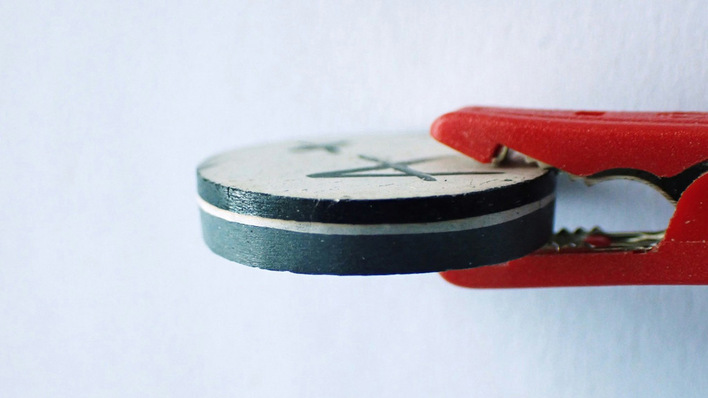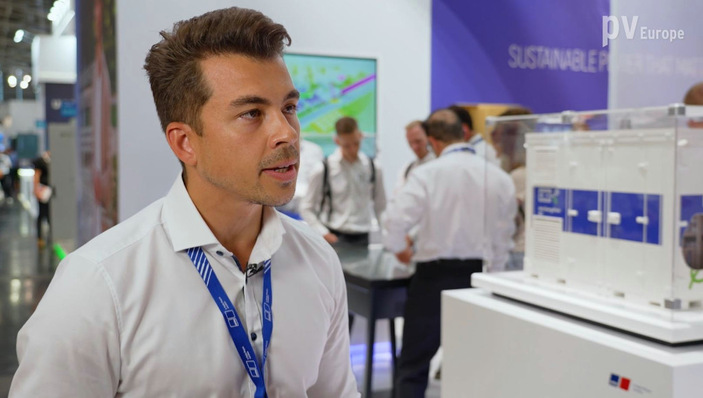Read more:
Part One: “For us, 2015 was an excellent year. We managed to raise our turnover by 80 per cent”
In the Fronius Energy Package, you introduced an interesting battery system: a high-voltage battery using cells made by Sony. How has it sold so far?
Martin Hackl: We started selling the Energy Package in July. It consists of the Symo hybrid inverter and the battery. By year’s end we have fulfilled our goals: We sold about 1,300 units – mostly to Germany and Austria. I expect that the bulk of our projected growth in 2016 will be in storage.
Fronius also works in partnership with Tesla in distributing the Powerwall. Can you say exactly when the Powerwall will be here?
Start of production for this storage solution is scheduled for the third quarter of 2016. We intend to go into beta testing in spring, followed by pre-launch production. It will go on sale in the third quarter.
Tesla provides the battery, what will Fronius contribute? Will it be one unit or an assembly of separate components?
The Powerwall will be equipped with a Symo Hybrid Powerwall, a Symo hybrid inverter specifically adapted to that battery. It will have special interfaces for the Tesla storage elements, but Smart Metre and Multiflow technology by Fronius will also be integrated. As needed, the system can be hooked up in DC or AC. It will be available in three levels of output: three, four and five kilowatts. The Tesla Powerwall will also be suitable for outdoor installation, for instance by mounting it on an outside wall. This is made possible by Tesla’s Thermal Management system, developed for the automobile segment and now adapted to domestic storage.
How will servicing and warranty be organized?
We alone will take care of that. It makes absolutely no sense for us to take care of the inverter, but if there is anything with the battery to refer the customer to the producers in the US. Because of the so called Care Package for the Tesla Powerwall, the technician will not notice any difference. To him, this is a Fronius product. We take care of all warranties and the entire service, just as we always do.
What technical innovations in Fronius inverters can we expect to see in 2016?
In 2016, we will add to the functionality of our Snap Inverters. We are putting a lot of ideas and imagination into that. We will do more to adapt our units to self-consumption and zero feed-in, for example. Heat generation will be an important issue, also as part of the integration into an energy management scheme. We will extend our range of hybrid inverters by a single-phase device. At the Intersolar, we will present new devices for between four and eleven kilowatts, specifically to serve the growing single-phase markets of Italy, the UK and Australia. Further, we want to add more content to the Fronius Solar Web, in order to be able to provide our customers with more data and a better service.
What is your prognosis for how the prices for solar inverters will develop?
There you have to make a distinction between simple and lean units for industrial applications or solar parks and those units geared towards self-consumption. We are giving the inverter ever more functions, more intelligence, at almost constant or falling prices per kilowatt. With the lean inverters, price competition is much more fierce especially when it comes to the most inexpensive DC-AC realisation and the connection to the grid.
And in storage?
Pressure on prices is greater there and we are expecting them to continue falling. And volume is developing very positively. Falling prices for storage will encourage further market growth.
Will there be anything new for your service partners?
Our programme for our partner contractors is the root of our market success. With the SOS platform, an online tool that supports technicians in servicing Fronius inverters, we have made providing service even easier. Now we want to increasingly apply this to the international markets, so that the technician with his can tool case can exchange circuit boards even easier and faster – in a one-way trip. We are very much concentrating on that. We will also add new communication services to the SOS platform.
The interview was conducted by Heiko Schwarzburger.







